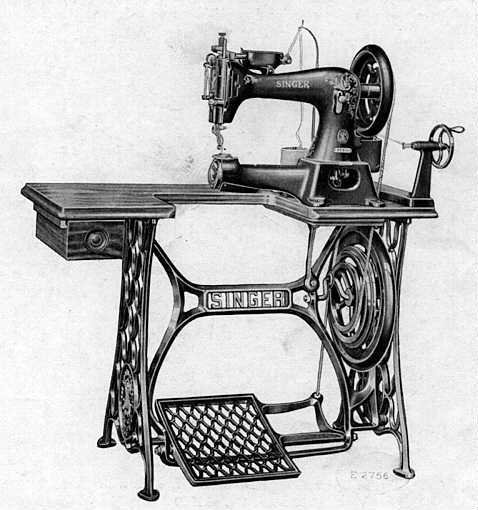Intro: Granddad 45
Welcome to the workshop
I have known for a while that I wanted to expand our team's abilities to a cylinder arm sewing machine. There are areas in constructing tents that become very constricted and challenging to get a professional result on a flatbed machine.
After eight months of online searching, this venerable gent popped up.
I was gifted my first industrial Singer over 30 years ago. A decade ago, I made many tents on a very enthusiastic Singer sold to me by someone who has become a dear friend, and in 2020 I finally secured the machine of my dreams; Miss Singer K6. Shown here, nestled within our new, recently renovated team member.
Today I am proud to introduce you to our newest Singer machine built in 1916 at the Clydebank factory in Scotland in 1916.
A time of unrest and monumental upheaval.
Artists Representation
In 1882 George McKenzie broke ground on the largest Singer factory in the world to be built. Kilbowie Clydebank Scotland
Contemporary & Shameful Industrial Conflict
"During 1911 twelve women cabinet polishers at the Kilbowie plant went on strike when their work was reorganised in a way that increased their workload but decreased their wages. Within two days almost all of the 11,000 workforce came out on strike in sympathy with the women. The expression of solidarity was most likely the influence of the Industrial Workers of Great Britain (IWGB) and the Socialist Labour Party which were both active within the plant. These two political groups both promoted the idea of industrial unionism and gave leadership to the striking workers. In response, the Singer management went on the offensive by closing the works and threatening to remove production to other plants in Europe. They also let it be known they would ensure that workers would find it very difficult to ever get other employment in the Glasgow area if the strike was not brought to an immediate end.After the company's ultimatum a ballot of the workers voted to end the strike and the strike committee had no option but to concede defeat. The dispute ended with an unconditional return to work on 10 April 1911. Soon afterwards the company initiated a campaign of systematic victimisation which resulted in the sacking of over 400 workers, including all the strike leaders and members of the IWGB."Source - https://www.singersewinginfo.co.uk/kilbowie
Factory Serial No.
Early inventory listings will assist in identifying machines, their construction date and their place of manufacture.
How do I know the date of manufacture?
This is the breakdown of how this works -
(45K)is the factory model identifier. These 45K were constructed as flatbed or cylinder arm.
(s.v83) I can not find anything at all about a 'Special Version' (s.V83)
(F) as the factory prefix.
(7115978) Serial No. Shows as 45K made in 1916.
1500 45k are listed for 1916 and is a large batch. The production runs previous this year was only 800.
I could speculate endlessly about if this was related to WW1 manufacturing or factory capacity growth, but it would be just that.
I have no way to investigate the original purchaser and how it arrived in Australia. If anyone might know of any import records regarding this please reach out.
How do I know the Australian History?
I am in negotiations with the generous family who passed this machine on to me about its intergenerational history, images of this machine in use and a more accurate retelling.
Still, in the meantime, I will record what I remembered, as it was told when I took over as custodian in 2022.
This machine has been at work within the same family for three generations.
It was brought second-hand and studiously put to work with canvas and leather.
Originally on the factory treadle stand but changed when a painful accident happened around the flywheel to a family member.
It was located in Ravenshoe, QLD, before travelling south 1678km over the years, then another 460km to our studio in The New England region of NSW.
I have often referred to this machine as 'Granddad'. I do this out of respect for the family history and stories told as I negotiated the care and ongoing future of such a mighty tool.
Factory Treadle Stand
As an option, the 45K could be mounted on a rather fine treadle stand. The driving flywheel was weighted to provide the necessary 'ompf.'
Quite dangerous for small fingers.
The Jirrbal Rainforest country
After colonisation, Ravenshoe relied on timber for its economic survival.
In 1988 the rainforest around the town was put on the World Heritage Register.
The Renovation
This machine had been kept in good condition and was almost in running order.
If I was not such a Singer nerd, I could have given it a good oil, tightened up and let that be that but...
Shout out to my fellow Singer Nerds!
With the opportunity to understand the workings, I went into a stripdown renovation. This would strengthen the plant in preparation for the work I intend.
My skills were tested and built up throughout the process. As a result, I am much more confident to start the lifelong process of using this machine well.
Welcome to the team Granddad 45!
We look forward to working with you for as many years as we have left.























